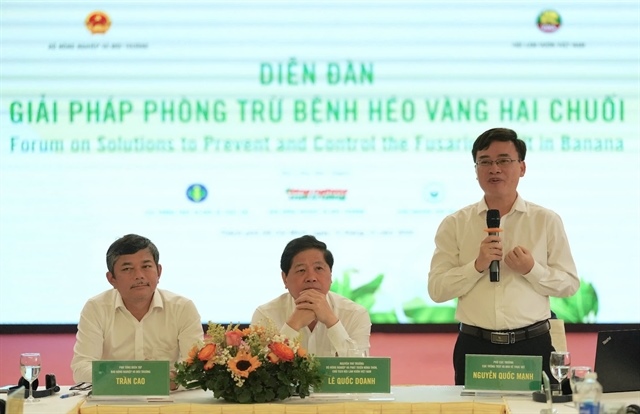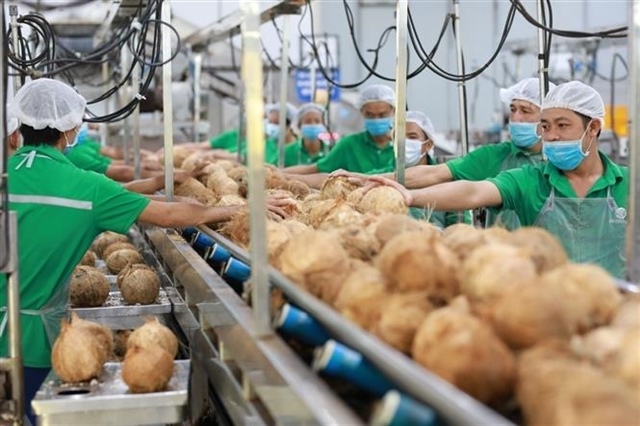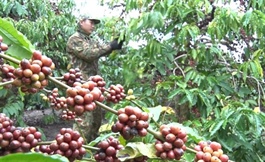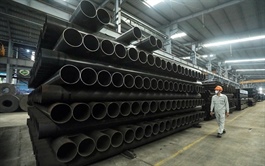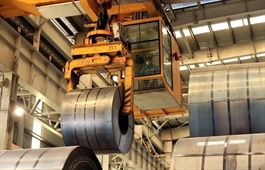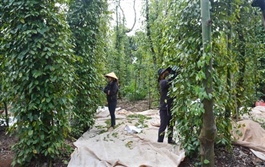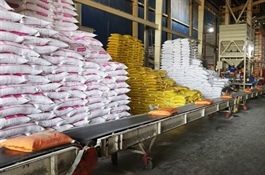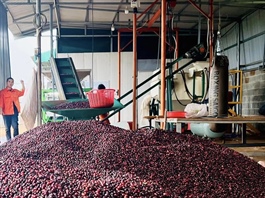Rice export prices drop, but decline expected to be short-term
Rice export prices drop, but decline expected to be short-term
Việt Nam’s rice export prices have declined, reaching their lowest level in three years.

Rice bags being loaded for export. — VNA/VNS Photo |
A downward trend in Việt Nam’s rice export prices has persisted since December 2024, according to the Việt Nam Food Association.
As of February 12, Vietnamese 5 per cent broken rice was priced at only US$397 per tonne, compared to $425 per tonne for Thai rice, $413 per tonne for Indian rice and $402 per tonne for Pakistani rice.
For 25 per cent broken rice, Việt Nam’s export price stood at $372 per tonne, on par with Pakistan’s but $34 per tonne lower than Thailand’s and $22 per tonne lower than India’s.
Since peaking at $700 per tonne in mid-August 2023, rice export prices have plummeted to their lowest level in three years. Specifically, the export price for 5 per cent broken rice has decreased by $303 per tonne, a decrease of over 43 per cent.
Once a strong competitor for Thai rice and at times the world's highest-priced rice, Vietnamese rice has now fallen behind, ranking as the lowest among major rice exporting nations.
Phan Mai Hương, a rice market analyst, explained that in fact, Việt Nam’s rice prices surged in 2023 and early 2024 primarily thanks to India’s export ban. However, historically, Việt Nam’s white rice was priced at around $400 per tonne, while fragrant rice has ranged from $500 to $600 per tonne.
Only a few speciality brands were exported at higher prices. Thus, although the current prices have decreased sharply compared to 2023 and 2024, they are not exceptionally low given that India has resumed exports.
Hương emphasised that based on the market, the global price drop was expected from late 2024 as supply levels rebounded.
Phan Văn Có, Marketing Director at Vrice Co Ltd agreed that rice export prices are affected by abundant production from supplying countries, particularly India. This has intensified competition among rice exporting countries, including Việt Nam.
The continuous price drop has created challenges for some exporters, particularly those who signed early sales contracts in late 2024. Some customers are now renegotiating for lower prices or postponing shipments to pressure suppliers.
However, businesses had already agreed on purchasing prices with farmers. Lowering selling prices now would mean buying at a loss, leading to sluggish trade in the Mekong Delta region.
Adding to the pressure, the upcoming winter-spring rice crop is about to be harvested, which is the highest output of the year.
Many local farmers traditionally sell freshly harvested rice immediately, as they lack drying and storage facilities. Meanwhile, exporters without new orders struggle with limited financial capacity to stockpile rice, exacerbating market difficulties.
Diversifying markets

Rice bags being loaded for export. — VNA/VNS Photo |
Despite rice export prices hitting rock bottom, experts believe this downturn is only short-term.
"The sluggish rice market won’t last long, as global demand remains strong," Hương said. She noted that buyers from China and Africa have already begun exploring new contracts.
"Importers are well aware that Việt Nam’s winter-spring harvest is the country’s largest and the highest-quality crop of the year. As the harvest peaks, they will actively purchase rice," she added.
Rice exporters also remain hopeful. Hương emphasised that low trading activity doesn’t equate to reduced demand.
The Philippines and Malaysia still have a strong demand for reasonably priced rice in the mid-range quality segment, while the Middle East and Africa have increasingly favoured Vietnamese rice.
By March and April, when the winter-spring harvest nears completion, importers must make purchasing decisions and prices are expected to rise gradually.
Currently, rice prices are low and export orders are few, while harvest volumes are increasing and farmers want to sell immediately.
To ease this strain, businesses hope banks will provide working capital support for rice procurement and temporary storage. This would prevent supply bottlenecks for farmers and help companies stockpile rice for future exports at better prices.
In the long term, experts recommend that Vietnamese exporters proactively expand their market base and diversify their customer portfolios to avoid over reliance on a few major buyers.
In addition, they should tap into distribution channels and niche markets with demand for premium rice segments, which, though smaller in volume, offer higher economic returns and would help strengthen the Vietnamese rice brand globally.


